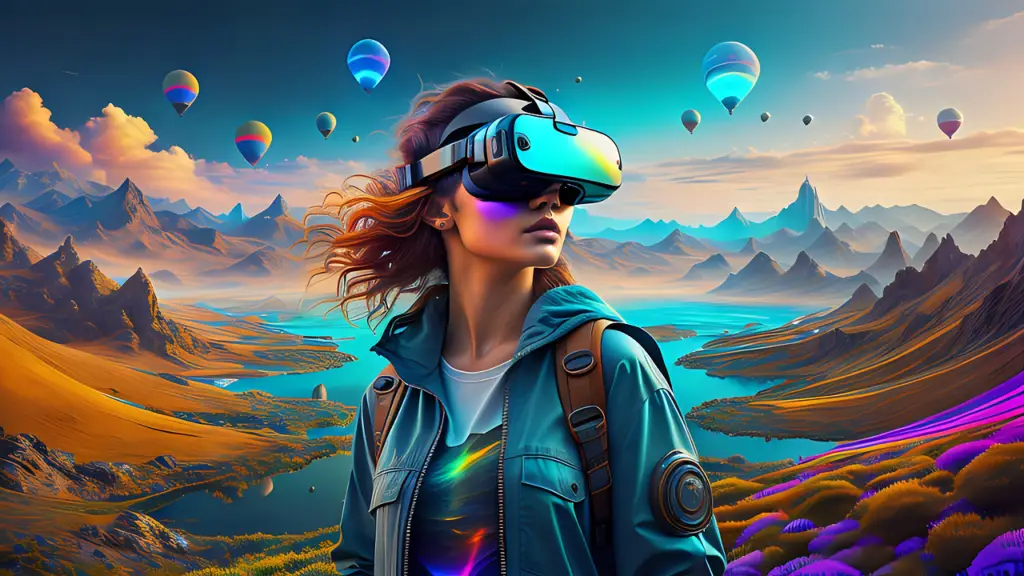Virtual Reality (VR) has emerged as a transformative technology, transporting users into immersive digital environments that simulate reality. This article explores what virtual reality is, delves into its diverse uses, examines key companies driving advancements, and evaluates their progress in shaping the VR landscape.
Understanding Virtual Reality
Virtual Reality refers to a computer-generated simulation of a three-dimensional environment, often experienced through specialized headsets. The goal is to create a realistic and immersive experience, allowing users to interact with the digital environment as if it were real. VR technology typically involves the use of headsets, motion sensors, and controllers to enhance user engagement.
Uses of Virtual Reality
1. Gaming and Entertainment
- VR has revolutionized the gaming industry, offering players an unparalleled level of immersion. From lifelike simulations to interactive storytelling, VR has redefined the gaming experience.
2. Education and Training
- In the education sector, VR provides a dynamic platform for immersive learning experiences. It’s used for training purposes, allowing users to practice real-world scenarios in a risk-free virtual environment.
3. Healthcare
- VR is making significant strides in healthcare, facilitating medical training, therapy, and even surgical simulations. It offers a controlled environment for medical professionals to hone their skills and improve patient outcomes.
4. Architecture and Design
- Architects and designers leverage VR to visualize and explore their creations in a virtual space. This aids in the design process, enabling professionals to make informed decisions before the physical implementation.
5. Virtual Tourism
- VR has transformed the way people experience travel by offering virtual tours of destinations. Users can explore landmarks and immerse themselves in different cultures without leaving their homes.
Companies in the Virtual Reality Space
1. Oculus (by Facebook)
- Oculus, acquired by Facebook, is a pioneer in consumer VR. The Oculus Rift and Quest series have gained widespread popularity. Facebook’s commitment to VR is evident in its continuous development of hardware and software for a compelling VR ecosystem.
2. HTC Vive
- HTC Vive is renowned for its high-end VR systems. The HTC Vive and Vive Pro offer premium VR experiences, especially in gaming and enterprise applications. The company is at the forefront of pushing the boundaries of VR technology.
3. Sony PlayStation VR
- PlayStation VR has brought VR gaming to the console market. With the support of the PlayStation platform, Sony has created a successful VR ecosystem, expanding the gaming experience for millions of users.
4. Valve Corporation
- Valve, known for the Steam gaming platform, entered the VR space with the Valve Index. The company emphasizes high-quality VR experiences and has contributed significantly to the development of VR hardware and content.
5. Google VR
- Google has made strides in the VR domain with projects like Google Cardboard and Daydream. While Cardboard offers a budget-friendly VR experience, Daydream focuses on high-quality mobile VR, demonstrating Google’s commitment to accessibility.
Progress in Virtual Reality
1. Advancements in Hardware
- Companies continue to innovate in VR hardware, with improved headsets, controllers, and sensors. Higher resolutions, wider fields of view, and enhanced tracking contribute to a more realistic and comfortable VR experience.
2. Content Expansion
- The availability of diverse and engaging VR content has expanded significantly. From games to educational applications, the growing library of VR experiences caters to a broad audience, driving adoption across various sectors.
3. Wireless VR
- The move towards wireless VR solutions enhances user mobility and comfort. Companies are investing in untethered VR experiences, reducing the reliance on cables and allowing for more dynamic interactions.
4. Social VR
- Integration of social elements within VR environments is becoming more prevalent. Users can connect with friends, attend virtual events, and share experiences, creating a social aspect that goes beyond traditional gaming and entertainment.
Conclusion
Virtual Reality continues to evolve, pushing the boundaries of what is possible in the digital realm. As companies like Oculus, HTC, Sony, Valve, and Google contribute to the development of hardware, software, and content, VR is becoming more accessible and diverse. The applications of VR extend beyond entertainment, impacting education, healthcare, and various industries. With ongoing advancements, the immersive experiences offered by virtual reality are set to become an integral part of our daily lives.
FAQs (Frequently Asked Questions)
- What is the difference between Virtual Reality and Augmented Reality?
- Virtual Reality immerses users in a completely digital environment, while Augmented Reality overlays digital elements onto the real world.
- Are there affordable VR options for consumers?
- Yes, options like Oculus Quest and Google Cardboard provide affordable entry points into the VR experience.
- How is VR being used in the healthcare industry?
- VR is used in healthcare for medical training, therapy, and surgical simulations to enhance skills and improve patient outcomes.
- Can VR be used for business applications?
- Yes, VR is utilized in business for training, virtual meetings, and simulations to improve productivity and collaboration.
- What challenges does the VR industry face for widespread adoption?
- Challenges include the cost of high-end hardware, concerns about motion sickness, and the need for more compelling content to attract a broader audience.



